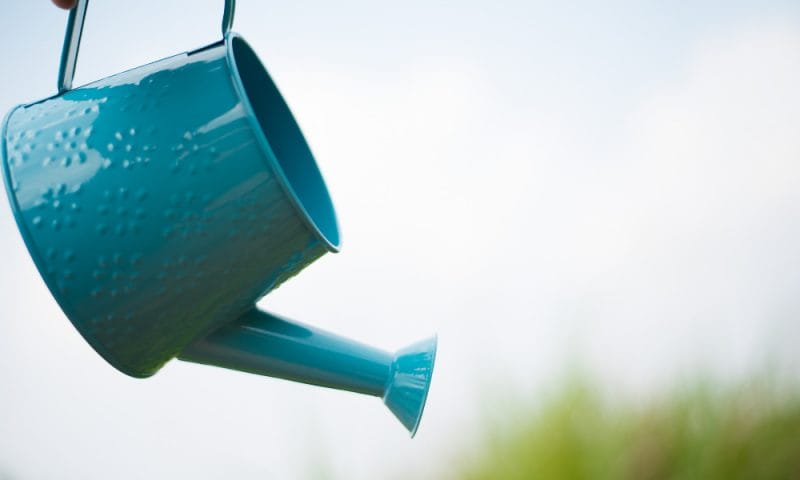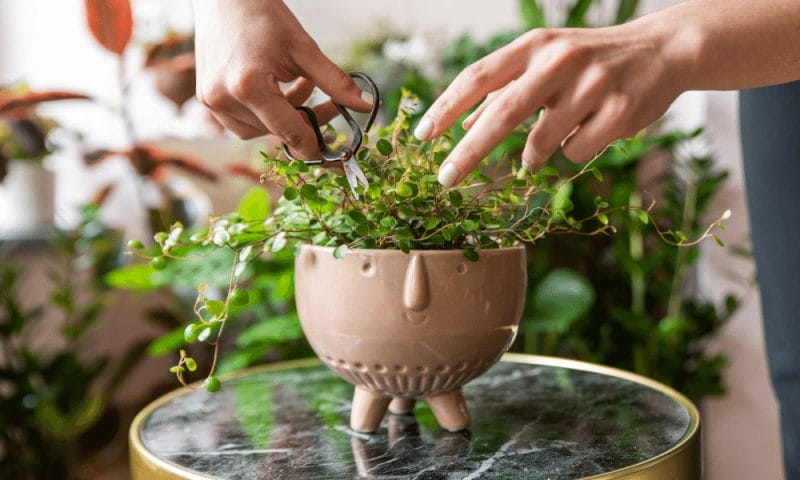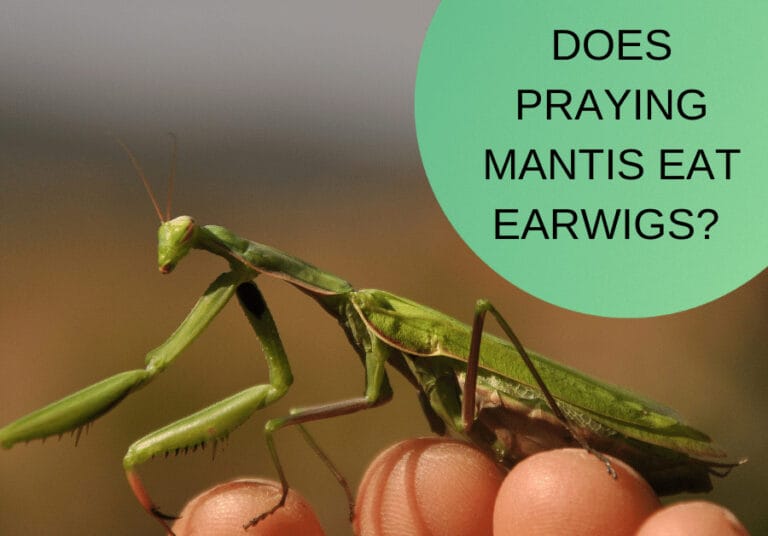
Are you tired of watching your succulent plants struggle to grow? Well, you're not alone! Many gardeners face the same challenges when it comes to nurturing these beautiful and resilient plants. But what if I told you that accelerating their growth is not rocket science? You can turn your succulent garden into a lush and thriving oasis with the proper care and attention.
In this post, we'll dive into 7 essential tips that will take your succulent game to the next level. From choosing suitable soil to proper fertilization and pruning techniques, you'll be equipped with the knowledge you need to create the ultimate succulent paradise. Maybe I'm going overboard a little nonetheless; get ready to discover the secrets to a thriving succulent garden. Are you ready? Let's go!
Table of Contents
Tip #1: Choose the Right Soil

An essential step in encouraging succulents to grow faster is choosing the correct soil. You can purchase succulent potting mix from your local big box store or online.
Cactus Soil – A Match Made in Heaven!
A quality cactus or succulent mix provides optimal drainage and air circulation for the roots, making it the perfect soil choice for our little green friends. – This type of soil helps ensure the plant's growth and survival, leading to a thriving succulent garden that's the envy of the neighborhood!
Regular Soil – A Recipe for Disaster!
Regular garden soil is often too dense and holds moisture for too long, like a kid holding onto their lollipop. – This can result in stunted growth and, ultimately, the death of the plant. – In other words, using the wrong soil can turn your succulent garden into a ghost town!
Make the Right Choice – Do Your Research!
Take the time to research and invest in a quality cactus or succulent mix. – Avoid using regular garden soil, even if it's readily available. – A small investment in suitable soil can mean the difference between a thriving or struggling succulent garden.
How To Create Quality Succulent Potting Soil?
A good soil mix can simultaneously provide moisture retention, drainage, and air circulation.
The ideal mixing ratio of the three main ingredients is:
- 3 cups of sand
- 3 cups of potting
- 1.5 cups of perlite or pumice
The purpose of perlite or pumice is to improve aeration and drainage. The use of pumice is also beneficial for binding nutrients and moisture.
Did you know: Vermiculite used in potting soil increases the water content and nutrient retention, aerating the soil and resulting in more nutrient-dense plants.
The Importance of Drainage – No Soaking Required!
Succulent plants are like Goldilocks; they want their soil just right! – Excess water left sitting in the soil can lead to root rot and make your succulents say, “Bye Bye!”. So, choosing the soil that allows excess water to drain away effectively is crucial.
Tip #2: Proper Watering Techniques

Water is essential for succulent growth, but it's also easy to over-water these plants. Over-watering can lead to root rot and, eventually, the death of the plant. On the other hand, under-watering can cause the leaves to shrivel and the plant to become stressed. I used to experience shriveled leaves but eventually solved the mystery. ( Read the blog post here)
The key is to strike a balance. Water your succulents thoroughly, but allow the soil to dry out completely between waterings. This will ensure that the roots receive enough moisture without becoming waterlogged. To check if the soil is dry, insert your finger about an inch into the soil. If it feels dry, it's time to water. Following these watering techniques will ensure a healthy and thriving succulent garden.”
Tip #3: Fertilize Succulents Regularly

You can use fertilizer to expedite the growing process. We recommend a fertilizer that is specific for succulents. The fertilizer will bolster the health of your succulent while providing it with adequate energy to concentrate on growing rather than extending its roots. Also, ensure the fertilizer you apply is manageable to the extent that it will not destroy sensitive succulents.
Choosing the Right Fertilizer
Succulent plants have unique nutritional needs, and not all fertilizers are created equal. Therefore, it's best to identify a balanced, water-soluble fertilizer specifically formulated for cacti and succulents is the best choice. I also recommend avoiding fertilizers with high nitrogen content, which can lead to excessive growth and a weaker root system.
The Benefits of Regular Fertilization
Regular fertilization helps provide the proper nutrients necessary for succulent plants to grow and thrive. I dare say without adequate nutrition, succulent plants may struggle to produce new growth and maintain their vibrant colors. I recommend regular fertilizing so you can ensure that your succulent plants receive the nourishment they need to flourish.
The Importance of Timing
Timing is key when it comes to fertilizing succulent plants. Here are a couple key points to remember:
- Fertilize every 4-6 weeks during the growing season and reduce or stop fertilizing during the dormant period.
- Overfertilizing can be just as damaging as under-fertilizing, so following the recommended guidelines for your specific fertilizer is important and highly encouraged.
By choosing the right fertilizer and fertilizing regularly, you can give your succulent plants the nutrition they need to grow and thrive.
Tip #4: Provide Adequate Light

Light is a critical aspect of succulent growth and survival. Succulents need adequate light to photosynthesize and produce the energy necessary for growth. However, it's important to note that too much direct sunlight can damage these delicate plants. A south or west-facing windowsill is ideal for providing the right amount of light while protecting them from the scorching midday sun. Suppose you don't have a windowsill that provides enough light. In that case, you can supplement with artificial lightings, such as fluorescent lights or LED grow lights.
Tip #5: Use the Right Pot Size

The pot size you use for your succulent plants can significantly impact their overall health and growth.
A pot that is too small can limit root growth and can potentially lead to overcrowding. On the other hand, a pot that is too large can cause the soil to stay too moist for too long.
Choosing the right pot size can help create the ideal growing conditions for your succulent plants.
How to Choose the Right Pot Size
When selecting a pot for your succulent plants, it's essential to consider the size of the root system.
- A pot that is 1-2 inches larger than the root ball is usually sufficient.
- If you're planting multiple succulent plants in one pot, be sure there is enough space between them to allow for proper growth.
The Importance of Drainage
Earlier in this blog post, we talk about drainage from a soil perspective; however, in addition to the pot size, the drainage capabilities of the pot are also necessary.
Succulent plants need well-draining soil, and a pot with good drainage holes can help prevent root rot.
If your pot doesn't have enough drainage holes, consider adding some or using a layer of rocks or gravel at the bottom to improve drainage. I actually do both.
You can give your succulent plants the best possible growing conditions by choosing the right pot size and ensuring adequate drainage. Happy planting!
Tip #6: Proper Air Flow
Why Air Circulation Matters for Succulents
Proper air circulation helps to prevent stagnant air, which can lead to mold and fungal growth. This can be particularly harmful to succulent plants, as they have delicate leaves and stems susceptible to disease.
In addition, proper airflow also helps to increase the rate of photosynthesis. This is the process by which plants produce energy and grow, which is essential for succulent plants' healthy growth.
Fresh air and proper air circulation can also enhance the overall aesthetic of your succulent garden.
Succulent plants come in various shapes, sizes, and colors. By providing them with ample airflow, you can help showcase their unique beauty and keep them looking their best.
How to Give Your Succulents Some Breathing Room
You can improve air circulation for your succulent plants by following these 3 simple tips.
- Make sure to space out your plants enough so air can circulate freely.
- Place a fan near your plants to encourage air movement.
- Consider leaving some windows or vents open to allow airflow. By doing this, you can ensure that your succulents receive the fresh air they need to thrive!
Tip #7: Prune Your Succulents

Regularly pruning your succulent plants can bring numerous benefits to your garden's overall health and appearance. For starters, it will encourage you to keep a keen eye on the plant for proper maintenance.
The Perks of Pruning
Routine pruning helps to remove dead leaves and stems, promoting healthier growth and appearance of your succulent plants.
Pruning also allows for better air circulation, reducing the risk of disease.
A well-pruned succulent garden can add a touch of elegance and sophistication to your indoor garden space.
Trimming Techniques 101
When it comes to pruning, it's essential to use the proper technique. Use sharp, clean tools to avoid damaging the plant. Make clean cuts just above a leaf node, leaving behind a small stem that can grow into a new plant.
Be careful when pruning because over-pruning can cause stress and slow its growth. Timing is everything, so pay attention to your plant's growth patterns to determine the best time to trim.
Happy Pruning!
Don't be afraid to get your hands dirty! Regular pruning is vital to maintaining a healthy and beautiful succulent garden. So, grab your tools, put on your green thumb, and get ready to give your succulents the pruning they deserve! Have fun with it, and try experimenting with different pruning styles to see what works best for your plants.
FAQ: Speeding Up Succulent Growth
Do succulents grow better in soil or rocks?
Succulents are a plant that is incredibly easy to care for and requires minimal maintenance. Whether they grow better in soil or rocks is not necessarily clear-cut; it depends on the succulent species, as some do better in the soil while others thrive in rocks.
Generally speaking, succulents prefer well-draining soil mixed with sand, gravel, and perlite for aeration. Rocks can also be used as a base layer at the bottom of the pot, which will help to increase drainage and prevent root rot. Ultimately, experimentation with soil and rocks will determine what works best for you and your succulent plants. However, it's important to note that growing succulents in rocks should be changed every couple of months to ensure the roots stay healthy.
Do Succulents “Like” Crowded Roots?
Succulents can tolerate crowded roots to some extent. Generally, they prefer loose soil that is well-draining and allows their roots to spread out and breathe. When succulents are overcrowded in pots or planters, their growth can be stunted as they may not have access to the air, water, and nutrients they need. Giving your succulent enough space to grow properly and stay healthy is important. If you notice any signs of distress, such as wilting or yellowing leaves, take it as a sign to re-pot your succulent into a larger container with fresh soil. This will help your succulent get the room it needs for its roots to spread and grow.
What is the fastest way to multiply succulents?
The fastest way to multiply succulents is through propagation. Propagation involves taking a cutting from a healthy, mature succulent (preferably the mother plant) and replanting it in soil or water. . Successful propagation requires the right environment, such as bright light and adequate humidity. Additionally, you will need to ensure that the temperature is not too cold or too hot, as this can hinder the growth process. It is also important to select healthy cuttings with no visible signs of disease or damage. Once propagated, it may take up to two weeks before the cutting develops roots and grows new leaves. With proper care, you should be able to see your plant grow quickly and multiply.
Why Is My Succulent Growing A Long Stem With Flowers
Simple! Your succulent is growing a long stem with flowers because it is in the process of blooming! Congratulations!!! This is a natural occurrence in succulent plants and is usually a sign that they are healthy and thriving. It looks like you've learned a thing or two. The stem is called a flower stalk, and it helps to support the blooms that will soon appear. When a succulent blooms, it will produce bright and colorful flowers which can last for several weeks. This is a beautiful and exciting time for your plant, so be sure to enjoy the show! And take a few pictures, post them on social media and tag us.
Conclusion: A Summary of 7 Key Growth-Boosting Tips”
Congratulations, you're now a succulent-growing pro! A standing ovation is in order. With your newfound knowledge of selecting the right soil, watering properly, fertilizing consistently, providing ample lighting and air circulation with the right pot size, and pruning with precision, you have the skills to care for your plants like a seasoned professional.
By following these 7 tips, you're well on your way to having a thriving succulent garden. But the learning doesn't have to stop here! Our blog is filled with valuable insights and tips to help you continue on your succulent-growing journey. Whether you're a seasoned green thumb or a beginner just starting out, there's always something new to discover. So don't be afraid to dive in and keep reading more pages on our blog!
So, what are you waiting for? Get started on your succulent-growing journey today and watch your plants thrive!


